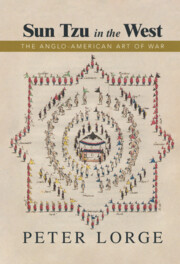Refine search
Actions for selected content:
15401 results in Military history
Dedication
-
- Book:
- The Lost Paratroopers of Normandy
- Published online:
- 10 November 2022
- Print publication:
- 10 November 2022, pp v-vi
-
- Chapter
- Export citation
7 - Escape, Exile, and Annihilation
-
- Book:
- The Lost Paratroopers of Normandy
- Published online:
- 10 November 2022
- Print publication:
- 10 November 2022, pp 163-187
-
- Chapter
- Export citation
Unpublished Primary Sources
-
- Book:
- The Lost Paratroopers of Normandy
- Published online:
- 10 November 2022
- Print publication:
- 10 November 2022, pp 242-243
-
- Chapter
- Export citation
5 - Days of Friendship, Hope, and Waiting
-
- Book:
- The Lost Paratroopers of Normandy
- Published online:
- 10 November 2022
- Print publication:
- 10 November 2022, pp 113-136
-
- Chapter
- Export citation
2 - Overseas
-
- Book:
- The Lost Paratroopers of Normandy
- Published online:
- 10 November 2022
- Print publication:
- 10 November 2022, pp 40-64
-
- Chapter
- Export citation
Figures
-
- Book:
- The Lost Paratroopers of Normandy
- Published online:
- 10 November 2022
- Print publication:
- 10 November 2022, pp viii-ix
-
- Chapter
- Export citation
Copyright page
-
- Book:
- The Lost Paratroopers of Normandy
- Published online:
- 10 November 2022
- Print publication:
- 10 November 2022, pp iv-iv
-
- Chapter
- Export citation
4 - Liberators and Friends
-
- Book:
- The Lost Paratroopers of Normandy
- Published online:
- 10 November 2022
- Print publication:
- 10 November 2022, pp 91-112
-
- Chapter
- Export citation
Acknowledgments
-
- Book:
- The Lost Paratroopers of Normandy
- Published online:
- 10 November 2022
- Print publication:
- 10 November 2022, pp 218-219
-
- Chapter
- Export citation
Introduction
-
- Book:
- The Lost Paratroopers of Normandy
- Published online:
- 10 November 2022
- Print publication:
- 10 November 2022, pp 1-13
-
- Chapter
- Export citation
8 - Graignes in Historical Memory
-
- Book:
- The Lost Paratroopers of Normandy
- Published online:
- 10 November 2022
- Print publication:
- 10 November 2022, pp 188-213
-
- Chapter
- Export citation

Sun Tzu in the West
- The Anglo-American Art of War
-
- Published online:
- 03 November 2022
- Print publication:
- 17 November 2022
1 - The Gospel of Rehabilitation
-
- Book:
- Bodies of Work
- Published online:
- 20 October 2022
- Print publication:
- 27 October 2022, pp 23-59
-
- Chapter
- Export citation
3 - A Duty Incumbent on All Allied People
-
- Book:
- Bodies of Work
- Published online:
- 20 October 2022
- Print publication:
- 27 October 2022, pp 106-135
-
- Chapter
- Export citation
Bibliography
-
- Book:
- Bodies of Work
- Published online:
- 20 October 2022
- Print publication:
- 27 October 2022, pp 230-251
-
- Chapter
- Export citation
Tables
-
- Book:
- Bodies of Work
- Published online:
- 20 October 2022
- Print publication:
- 27 October 2022, pp ix-ix
-
- Chapter
- Export citation
Index
-
- Book:
- Bodies of Work
- Published online:
- 20 October 2022
- Print publication:
- 27 October 2022, pp 252-257
-
- Chapter
- Export citation
Contents
-
- Book:
- Bodies of Work
- Published online:
- 20 October 2022
- Print publication:
- 27 October 2022, pp vii-vii
-
- Chapter
- Export citation
4 - He Marches Off On an Entente Leg
-
- Book:
- Bodies of Work
- Published online:
- 20 October 2022
- Print publication:
- 27 October 2022, pp 136-182
-
- Chapter
- Export citation
Conclusion: The Right to Rehabilitation
-
- Book:
- Bodies of Work
- Published online:
- 20 October 2022
- Print publication:
- 27 October 2022, pp 221-229
-
- Chapter
- Export citation
